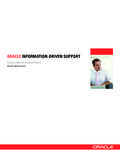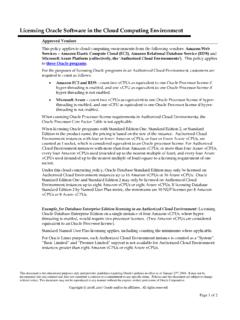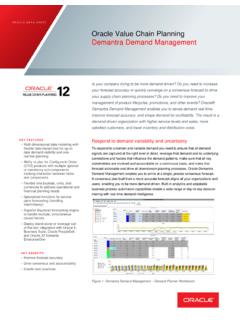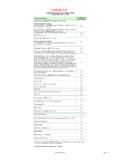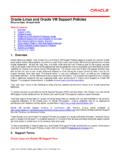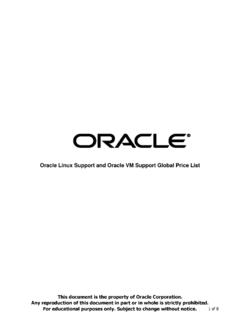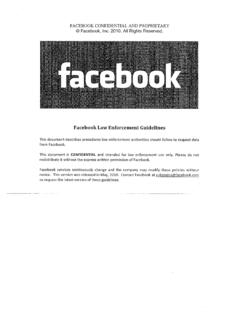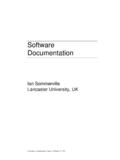Transcription of Doing SQL from PL/SQL: Best and Worst Practices - Oracle
1 Doing SQL from PL/SQL: best and Worst PracticesAn Oracle White PaperSeptember 2008 Doing SQL from PL/SQL: best and Worst following is intended to outline our general product direction. it is intendedfor information purposes only, and may not be incorporated into any contract. Itis not a commitment to deliver any material, code, or functionality, and shouldnot be relied upon in making purchasing decisions. The development, release,and timing of any features or functionality described for Oracle s productsremains at the sole discretion of SQL from PL/SQL: best and Worst SQL from PL/SQL: best and Worst PracticesCONTENTSA bstract.. 1 Introduction.. 2 Caveat.. 3 Periodic revision of this paper.
2 3 Embedded SQL, native dynamic SQL and the DBMS_Sql API.. 5 Embedded SQL.. 5 Resolution of names in embedded SQL statements.. 6 Name capture, fine grained dependency tracking, and defensive programming .. 8 Ultimately, all SQL issued by a PL/SQL program is dynamic SQL .. 9 Embedded SQL is more expressive than some programmers realize.. 10 Native dynamic SQL.. 11 The DBMS_Sql API .. 15 Cursor taxonomy.. 17 Questions addressed by the cursor taxonomy.. 17 The terms of art .. 18sharable SQL structure .. 18session cursor .. 19implicit cursor .. 20explicit cursor .. 20ref cursor .. 21cursor variable .. 21strong ref cursor .. 22weak ref cursor .. 22identified cursor .. 24 DBMS_Sql numeric cursor.
3 25explicit cursor attribute .. 26implicit cursor attribute .. 26 Summary .. 27 Approaches for selectstatements .. 30 Selecting many rows unbounded result set.. 30 Programming the fetchloop .. 31 Opening the cursor.. 32 Selecting many rows bounded result set.. 33 Selecting many rows select list or binding requirementnot known until run-time.. 35 Selecting a single row.. 39 Approaches for producer/consumer modularization .. 41 Stateful producer/consumer relationship.. 43 Stateless producer/consumer relationship .. 45 Doing SQL from PL/SQL: best and Worst for insert, update, delete, and merge statements.. 47 Single row operation .. 47 Single row insert.. 47 Single row update.
4 49 Single row delete.. 50 Single row merge.. 50 Multirow operation .. 53 Handling exceptions caused when executing the forallstatement.. 54 Digression: DML Error Logging.. 55 Referencing fields of a record in the forallstatement .. 56 Bulk merge.. 56 Using native dynamic SQL for insert, update, delete, and merge.. 57 Some use cases .. 59 Changing table data in response to query results.. 59 Number of in list items unknown until run time .. 61 Conclusion.. 63 Appendix A:Change History .. 64 Appendix B:Summary of best practice principles .. 65 Appendix C:alternative approaches to populating a collection of records with the result of a select statement .. 71 Appendix D:Creating the test user Usr, andthe test table (PK number, v1 varchar2(30).)
5 72 Doing SQL from PL/SQL: best and Worst Practicespage SQL from PL/SQL: best and Worst PracticesABSTRACTThe PL/SQL developer has many constructs for executing SQL statements, andthe space of possibilities has several dimensions: embedded SQL versusnative dynamic SQL versus the DBMS_Sql API; bulk versus non-bulk; implicitcursor versus parameterized explicit cursor versus ref cursor; and so which to use might seem daunting. Moreover, as new variants havebeen introduced, older ones sometimes have ceased to be the optimal Database 11g has kept up the tradition by bringing some improvementsin the area of dynamic paper examines and categorizes the use cases for Doing SQL fromPL/SQL, takes the Oracle Database 11g viewpoint, and explains the optimalapproach for the task at SQL from PL/SQL.
6 best and Worst Practicespage paper is written for the Oracle Database developer who has reasonablefamiliarity with programming database PL/SQL units and who, in particular, hashad some experience with all of PL/SQL s methods for processingSQL statements. Therefore, it doesn t attempt to teach, or even to review, everyvariant of each of these methods; rather, by assuming some prior knowledge, it isable to make points that often go unmade in accounts that teach these methodslinearly. This way, it is able to give the reader the sound conceptual understandingthat is the basis of any and all best practice analogy might help. Many people, as adults, pick up a foreign language byosmosis and, eventually, end up where they can express themselves fairly clearlybut, nevertheless, use idioms that indicate that they have no deep understandingof how the language works.
7 Sometimes, these idioms are so awkward that whatthey want to say is misunderstood. The remedy is active study to learn thegrammar rules and the meanings that sentences that adhere to these first section, Embedded SQL, native dynamic SQL and the DBMS_Sql API onpage 5, gives an overview of PL/SQL s three methods for processingSQL selectstatement is by far the most frequent kind of SQL statement issued byapplication code1. The second section, Approaches for select statements on page 30,classifies the use cases along these dimensions: Selecting many rows where the result set size might be arbitrarily large;selecting many rows where the result set size can be assumed not to exceed areasonable limit; and selecting exactly one row.
8 Being able to fix the SQL statement at compile time; being able to fix itstemplate at compile time, but needing to defer specifying the table name(s)until run time; needing to construct the select list, whereclause, or order byclauseat run time. Being able to encapsulate the specification of the SQL statement, fetching ofthe results, and the subsequent processing that is applied to the results in asingle PL/SQL unit, or needing to implement to processing of the results in adifferent PL/SQL the selectstatement, SQL statements that change table data are the nextmost common. The third section, Approaches for insert, update, delete, and mergestatements on page 47, discusses lock table statement, the transaction control statements, and all the kinds ofSQL statement that embedded SQL does not support are trivial to program andneed no fourth section, Some use cases on page 59, examines some commonlyoccurring scenarios and discusses the best approach to implement definition of application code excludes the scripts that install and upgrade sure that you re reading the latest copy of this paper.
9 Check the URL given at the top of each SQL from PL/SQL: best and Worst Practicespage best practice principles will be stated in the context of the discussions inthis paper. They are reproduced2 for quick reference, in Appendix B: Summary ofbest practice principles on page paper aims to teach the reader the optimal approaches to use when writingde novo code. It makes no attempt to justify code renovation best practice principles for programming any 3GL is phenomenallydifficult. One of the hardest challenges is the safety of the assumption that thereader starts out with these qualities: Has chosen the right parents3. Has natural common sense coupled with well-developed verbal reasoningskills.
10 Has an ability to visualize mechanical systems. Requires excellence from self and others. Has first class negotiating skills. (Good code takes longer to write and test thanbad code; managers want code delivered in aggressive timeframes.) Has received a first class education. Can write excellent technical prose. (How else can you write the requirementsfor your code, write the test specifications, and discuss problems that arisealong the way?)Then, the reader would be fortunate enough to work in an environment whichprovides intellectual succor: Has easy access to one or several excellent , the reader would accept that, with respect to the subject of this paper, theinternalization and instinctive application of best practice principles depends,ultimately, on acquiring and maintaining these qualities: Knows Oracle Database inside out.

